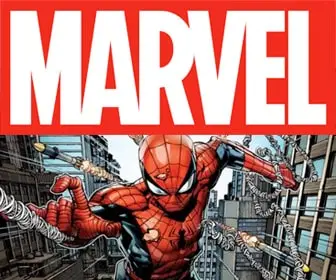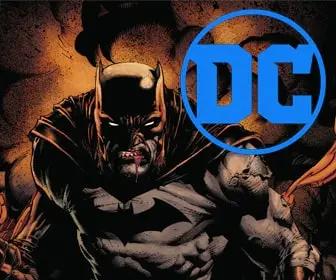
“The Seven Basic Plots” for Comic Creators

Have you ever stared at a blank page, yearning for a captivating comic book plot? Fear not, aspiring writer! Christopher Booker’s insightful book, “The Seven Basic Plots,” unlocks a universal storytelling secret. By exploring these fundamental narrative structures, you’ll discover a treasure trove of ideas to craft engaging comic book adventures for your heroes and villains. From the classic “Overcoming the Monster” to the transformative “Rebirth,” Booker’s framework provides a roadmap to plot compelling stories that resonate with readers. So, unleash your inner comic book mastermind and dive into the world of the seven basic plots!
The Seven Plots and Comic Book Examples:
1. Overcoming the Monster
Plot Overview: In this plot, the hero must confront and defeat a great evil that threatens them or their world. This can be a literal monster or a metaphorical one, such as an oppressive regime or a personal demon.
Comic Book Example: Batman: The Dark Knight Returns by Frank Miller showcases Batman coming out of retirement to combat the crime-ridden streets of Gotham and face off against his old enemies, including the Joker and a newly reformed Two-Face. This story exemplifies the hero’s struggle to overcome formidable adversaries and restore order.
2. Rags to Riches
Plot Overview: The protagonist begins in a lowly state and through a series of events rises to a position of wealth, power, or happiness. This plot often involves personal growth and self-discovery.
Comic Book Example: Spider-Man follows Peter Parker, a nerdy high school student who gains extraordinary powers after being bitten by a radioactive spider. Despite initial struggles, he grows into a beloved hero, balancing his personal and superhero lives while using his newfound abilities for the greater good.
3. The Quest
Plot Overview: In a quest narrative, the hero and their companions set out to acquire an important object or achieve a significant goal, facing various trials and challenges along the way.
Comic Book Example: The Infinity Gauntlet series by Jim Starlin features a massive quest involving numerous Marvel heroes, including the Avengers and the Guardians of the Galaxy, who band together to stop the villain Thanos from wielding the all-powerful Infinity Gauntlet. Their journey takes them across the universe, facing immense dangers and making great sacrifices.
4. Voyage and Return
Plot Overview: The hero ventures into a strange and unfamiliar world, faces challenges, and ultimately returns home wiser and more experienced.
Comic Book Example: The Sandman: Season of Mists by Neil Gaiman follows Dream of the Endless as he journeys to Hell to free a former lover. During his voyage, he encounters various mythological beings and realms, eventually returning to his own realm with newfound wisdom and perspective.
5. Comedy
Plot Overview: This plot involves humorous situations and misunderstandings, often leading to a happy resolution. It typically features conflicts that are more lighthearted and focuses on the characters’ relationships.
Comic Book Example: Deadpool by various authors is a prime example of a comedic narrative in comics. The character Wade Wilson, known for his wisecracks and breaking the fourth wall, navigates various absurd and hilarious scenarios while maintaining a chaotic yet entertaining approach to heroism.
6. Tragedy
Plot Overview: Tragedy centers on the downfall of the protagonist due to a fatal flaw or unavoidable fate. The narrative often evokes pity and fear, ending in a somber resolution.
Comic Book Example: Batman: The Killing Joke by Alan Moore delves into the tragic backstory of the Joker while also showcasing the tragic elements of Batman’s own life. The story explores the thin line between sanity and madness, culminating in a grim and ambiguous ending that leaves a lasting impact on both characters.
7. Rebirth
Plot Overview: In a rebirth plot, the protagonist undergoes a significant transformation, often involving a period of darkness or despair before emerging renewed and rejuvenated.
Comic Book Example: Green Lantern: Rebirth by Geoff Johns revitalizes the character of Hal Jordan, who had previously fallen from grace and became the villain Parallax. Through a series of events, Jordan redeems himself, overcomes his past mistakes, and reclaims his mantle as Green Lantern, symbolizing his personal and heroic rebirth.
Beyond the Basics:
Christopher Booker’s “The Seven Basic Plots” isn’t meant to replace existing comic book storytelling techniques. Instead, it serves as a powerful foundation. Think of it as a sturdy skeleton upon which you can layer the unique elements of superhero universes, rich character development, and the stunning visuals that define comic books.
By understanding these core plot structures, you can craft stories that resonate with readers on a deeper level. The framework helps ensure your narrative has a clear direction, a satisfying arc, and leaves readers wanting more. It’s like having a secret decoder ring for unlocking the power of a compelling comic book plot.
The Seven Basic Plots: Why We Tell Stories
Published in 2004, Christopher Booker’s “The Seven Basic Plots: Why We Tell Stories” delves into the idea that there are a limited number of fundamental storylines that underpin all storytelling.
Booker, drawing on Jungian psychology, proposes seven archetypal plots that keep reappearing throughout human history, from myths and fairytales to modern novels and movies. He spends considerable time analyzing these seven plots and explores the reasons why we, as humans, are drawn to stories that follow these familiar structures.
The book offers breakdowns of the following basic plots:
- Overcoming the Monster: A hero confronts and defeats a villainous force.
- Rags to Riches: A poor protagonist achieves success, then experiences a reversal of fortune before ultimately regaining their prosperity.
- The Quest: A hero embarks on a journey to find a crucial object or reach a specific location.
- Voyage and Return: A character undertakes a transformative journey and returns home forever changed.
- Comedy: A story that follows a path towards happiness and harmony.
- Tragedy: A story featuring a downfall or reversal of fortune for the protagonist.
- Rebirth: A narrative that explores transformation and renewal.
Booker argues that these plots resonate with us because they tap into fundamental human experiences and desires. The book is known for its depth of analysis and the vast array of examples Booker uses to illustrate his points. While it can be challenging to read at times, “The Seven Basic Plots” offers a fresh perspective on storytelling and why certain stories continue to captivate us.
Conclusion:
Feeling overwhelmed by the blank page is a thing of the past. By incorporating Christopher Booker’s “The Seven Basic Plots” into your creative toolkit, you’ll have a wealth of story ideas at your fingertips. This framework offers a springboard for crafting engaging narratives that resonate with readers. Whether you’re a seasoned comic writer or just starting out, understanding these fundamental structures will empower you to create captivating comic book adventures. So, grab your pen, unleash your creativity, and get ready to plot the next blockbuster comic book saga!










